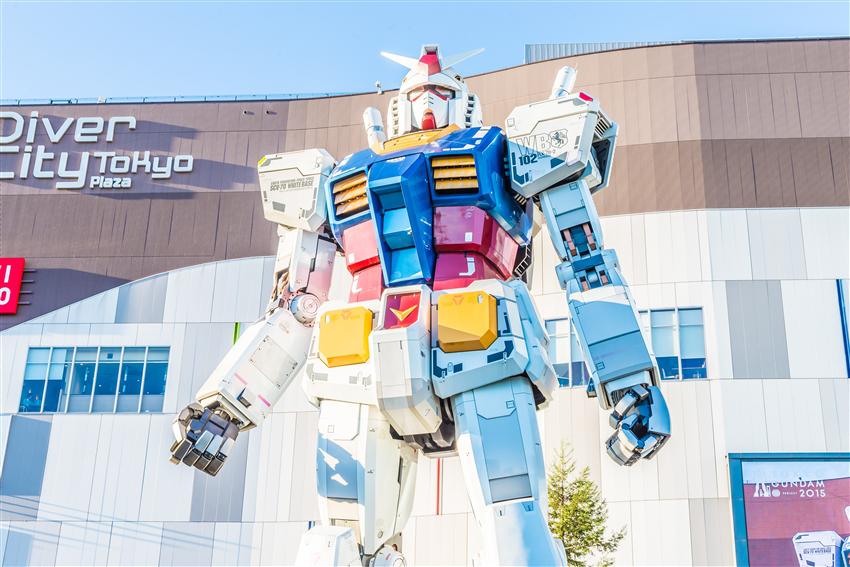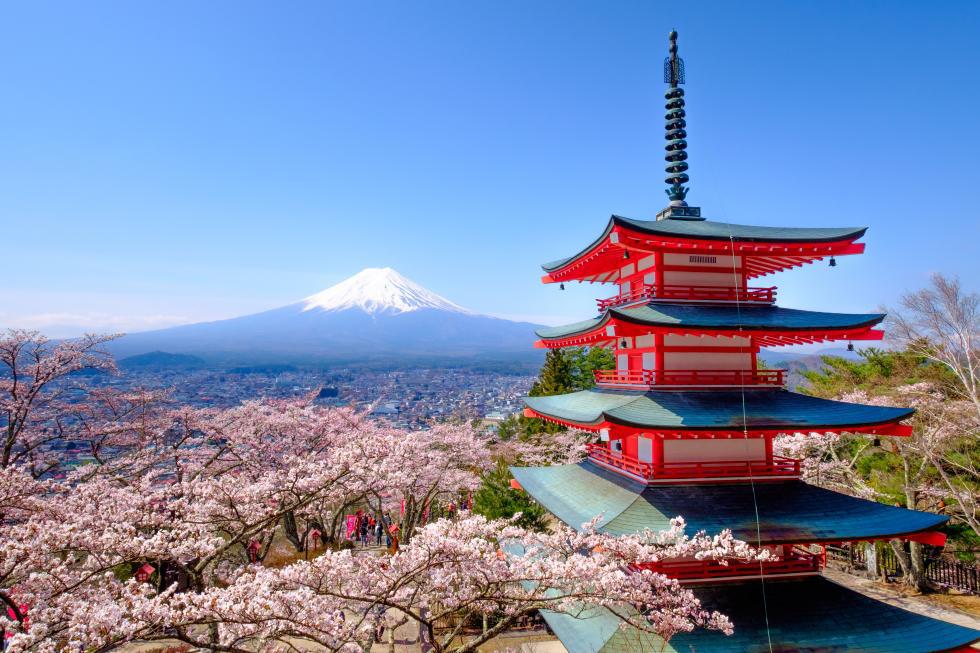The webpage has been idle for too long. To get the latest information, we suggest you refresh the page.
Tokyo Spring Sakura Tour | Scenic Cherry Blossoms with Mt. Fuji View, Shin-En Mount Ropeway, Kawaguchiko Tenkabo, Koishikawa Korakuen, Skytree Shopping Street, and a Five-Star Culinary Delight with a
Embark on the Tokyo Sakura Tour for five days of enchantment. Witness cherry blossoms at Mount Fuji, ride the Shin-Fujiyama Ropeway, and cruise Kawaguchiko's serene lake. Explore Koishikawa Korakuen garden and shop at Tokyo Skytree on day two. Indulge in a gourmet experience with five-star cuisine on days three to five. Each day concludes with tranquil relaxation in dual hot springs. This curated itinerary seamlessly blends nature, culture, shopping, and culinary delights, ensuring an unforgettable Tokyo journey. Whether it's cherry blossom beauty, historical gardens, shopping joys, exquisite cuisine, or hot spring serenity, each day promises a diverse and lasting Japanese adventure.
★★【Spring Sakura Top 3 Cherry Blossom Viewing Spots Selected from Hundred Choices】★★
★ Top 1 Cherry Blossom Viewing Spot: [Ueno Park] - Mountain cherries, Somei Yoshino cherry blossom tunnel [Cherry Blossom Season: Late March to Early April]
★ Top 2 Cherry Blossom Viewing Spot: [Inokashira Park] [Cherry Blossom Season: Late March to Early April]
★ Top 3 Cherry Blossom Viewing Spot: Sumida Riverbank [Sumida Park] - Enjoy the distant view of Tokyo's new landmark, Skytree [Cherry Blossom Season: Late March to Early April]
★★【Two Top Cherry Blossom Viewing Spots in Kanto with Japanese Garden Scenic Beauty】★★
1. Special Cherry Blossom Viewing Spot in Tokyo ~ Mito Tokugawa Residence Garden ~ [Koishikawa Korakuen] ~ Pond and Stream Style Garden
《Cherry Blossom Season: Mid-March to Early April》
Dating back to the ancestors of the Mito Tokugawa family, this is Tokyo's oldest Japanese garden deeply influenced by Chinese garden culture. Throughout the garden, one can see miniature representations of Chinese landscapes, such as Xiao Lu Mountain, ponds, rocks, and trees, creating a Japanese pond and stream style garden. During the cherry blossom season, the weeping cherry trees near the pond attract the attention of visitors.
2. Selected Cherry Blossom Viewing Spot in Kanto ~ [Shinjuku Gyoen] ~ Imperial Garden
《Cherry Blossom Season: Mid-February to Early April》
The Imperial Garden is also the largest garden in Tokyo, situated amidst the towering skyscrapers of the metropolis, resembling a green oasis in the modern urban landscape. There are approximately 1,300 cherry trees of around 65 varieties in the garden, making it a microcosm of cherry blossoms throughout the country. Before World War II, it was exclusively used by the imperial family, and only after the war did others have the opportunity to enjoy the exclusive beauty once reserved for the royal family.


※Cherry blossoms have an extremely brief blooming period, and factors such as weather conditions (rain, typhoons, temperature) can cause them to wither or not fully bloom. Please understand that you may appreciate them in their original location according to the prevailing circumstances.
★Japanese cherry blossom viewing attractions – a collection of breathtaking scenery featuring Mount Fuji, the Five-storied Pagoda, and cherry blossoms【Newkura-yama Asama Park and Asama Shrine】

★One of Japan's Top 100 Cherry Blossom Viewing Spots – 【Kuon-ji Temple on Mount Minobu】.
★Specially arranged to take the ★【Mount Minobu Ropeway】 – Enjoy a panoramic view of Japan's three great peaks.
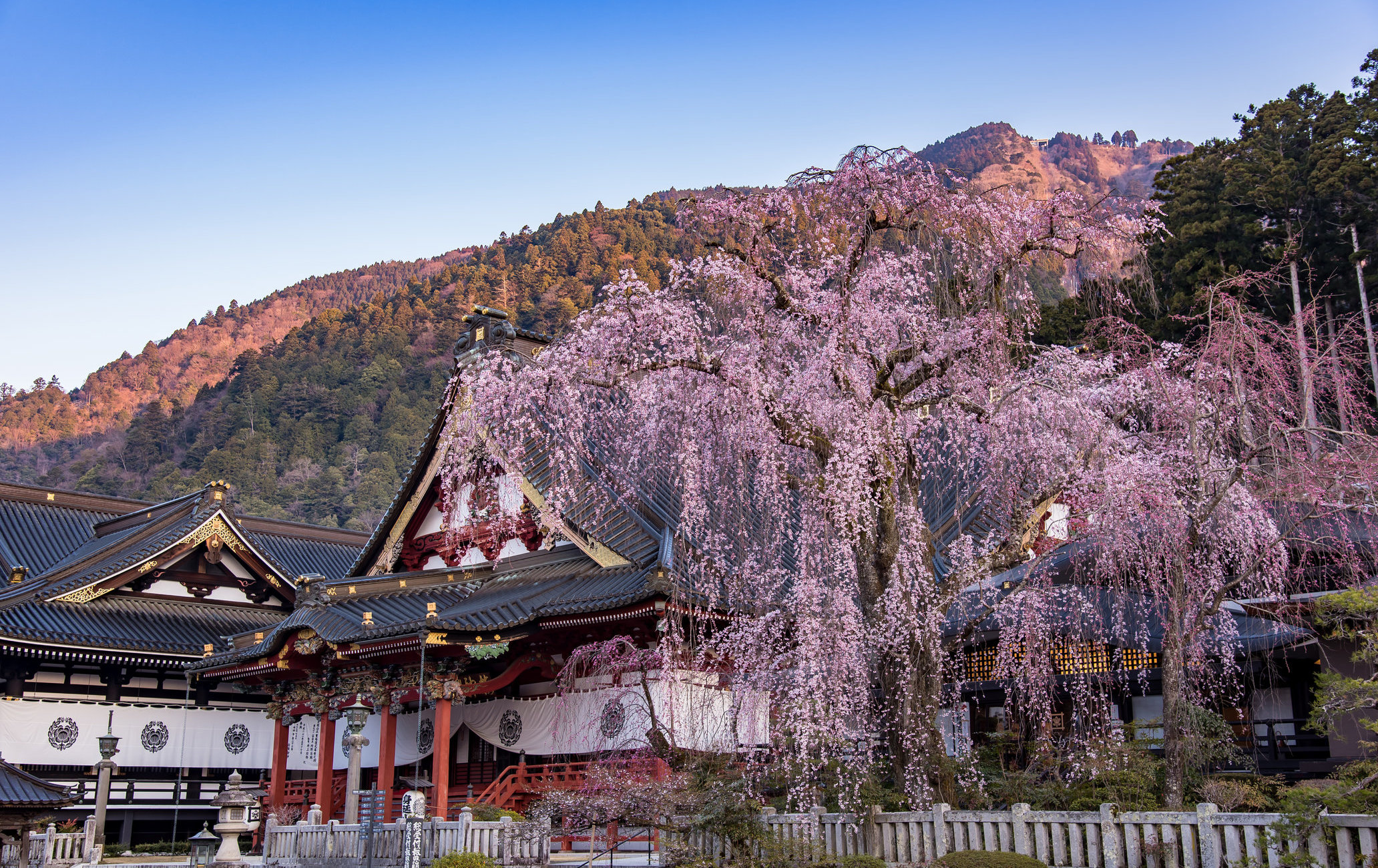
★ Specially arranged to experience the brand-new Kawaguchiko Sightseeing Boat ★
~ the "Tenka-go" ~ Enjoy a breathtaking view of Lake Kawaguchi's serene waters and picturesque mountains.
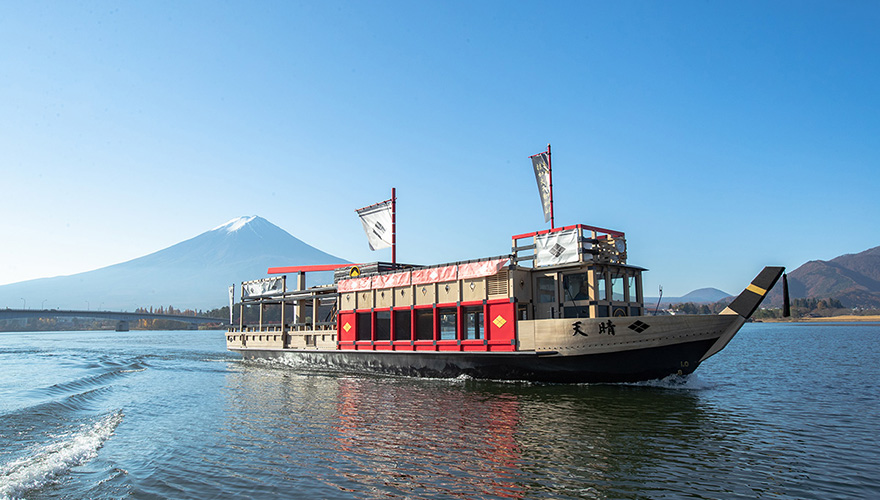
※In case the Tenka-go sightseeing boat is undergoing maintenance, facing technical issues, or any other factors preventing boarding, an alternative boat in the Fuji Five Lakes area will be provided or a refund will be arranged. We appreciate your understanding.
★ SKY TREE TOWN~Sunny Sky Street Shopping District – Offers a view of Tokyo Skytree (excluding the observation deck). ★

★★★ Specially arranged three types of classic Japanese culinary delights. ★★★
★ Gourmet Feast 1: All-you-can-eat Japanese hot pot & free-flow soft drinks.
★ Gourmet Feast 2: Unlimited Japanese barbecue grilling & free-flow soft drinks.
★ Gourmet Feast 3: Buffet of exquisite Japanese and Western fusion cuisine with an upgrade – Unlimited indulgence in long-legged crab for 60 minutes.
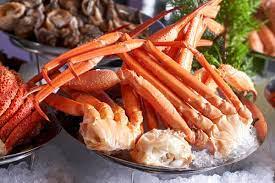
※ The above images are conceptual illustrations of the attractions.
Actual setups and seasonal variations in the food offerings may differ slightly based on each restaurant's arrangements and current purchases.
Your understanding is greatly appreciated.
★★★★★ Guaranteed one-night stay in a five-star hotel. ★★★★★
Tokyo, including Hilton Tokyo Bay, Sheraton Grand Tokyo Bay Hotel, Tokyo Dome Hotel, Prince Sakura Tower Tokyo, Hilton Tokyo Odaiba, Grand Nikko Tokyo Daiba, or other similar five-star hotels.

★ Cherry blossom viewing accommodation without any discounts - arrangement for one night.★
★Japanese hotel chain group - Newly opened or renovated hotels: Tokyo Bay Chomei Prince Hotel, Nikko JAL CITY Toyosu, Ikebukuro Sun City Prince Hotel, or hotels of a similar standard.
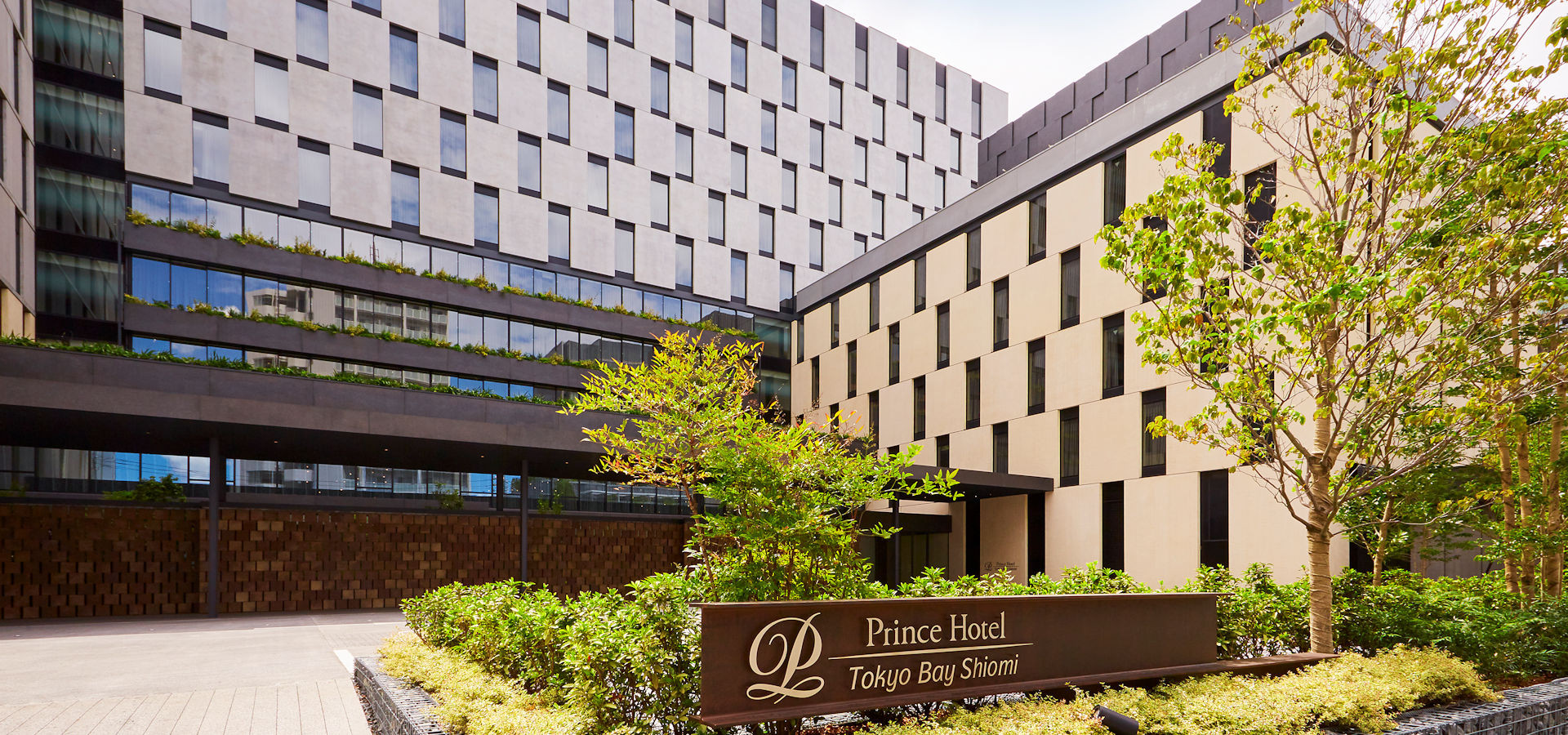
★ Specially arranged two nights at a scenic hot spring hotel in the Fuji Five Lakes or Yamanashi hot spring area
Hanairo Hotspring, Haruyama View, Kawaguchiko Premium Resort, or hotels of a similar standard.
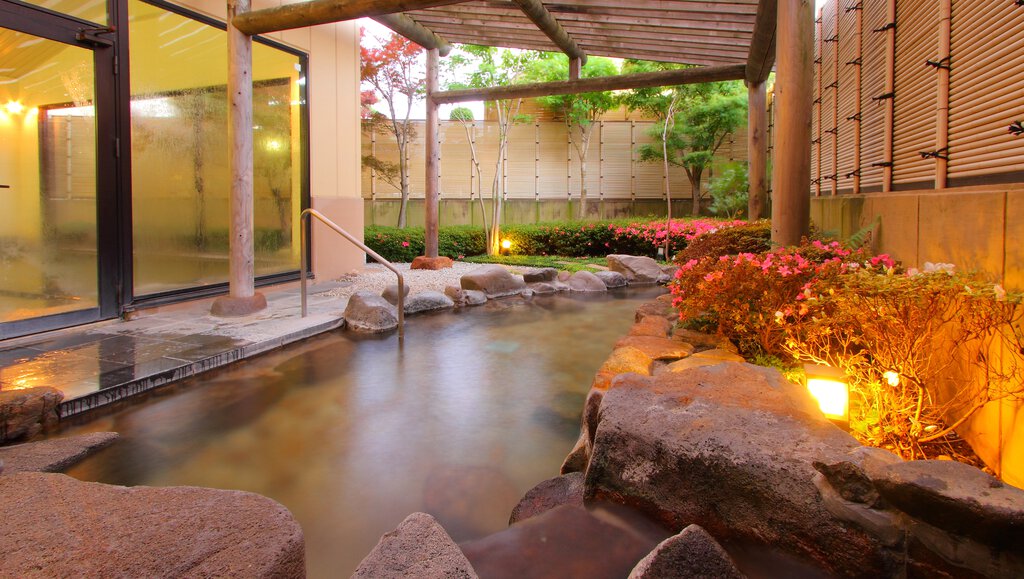

※The images are conceptual illustrations of the hotel and actual accommodations may vary. Please refer to the information provided during the briefing for more accurate details. Your understanding is appreciated.
◆Schedule notes explanation◆
★Special notes for registration during the peak flower viewing season★
Our itinerary strives to adhere to the original plan for transportation, accommodation, and tourist spots. The peak flower season is very brief, and in case of adverse weather conditions (rain, wind, or temperature...), if the flowers are not in full bloom or have withered, we will proceed to the destination as planned for pure appreciation. Your understanding is appreciated!
Sometimes, due to the crowd for flower viewing and hotel confirmations, there may be changes in the sequence of the itinerary or interchange of sightseeing spots or accommodation areas. In case of special circumstances such as boat issues, traffic congestion, tourist spot closures, hotel adjustments, or other unavoidable factors, the itinerary will be adjusted based on local conditions. We sincerely ask for your understanding, and please pay special attention during registration!
*The above quotation does not include round-trip airfare to Japan.
*The minimum number of participants for this itinerary is 16 or more, and the maximum is 41 or fewer.
*Due to the pandemic, please arrive at the airport 3-4 hours in advance to facilitate related tests and smooth customs clearance. (Subject to government announcements).
*We use legally-operated green-label cars, and arrange professional, friendly, and attentive senior guides to serve you.
*In June 2012, the Japanese Ministry of Land, Infrastructure, Transport, and Tourism issued the latest regulations stating that the daily driving time should not exceed 10 hours (based on the actual departure time from the garage), to effectively prevent traffic issues arising from bus drivers' fatigue. (Source: Japanese Ministry of Land, Infrastructure, Transport, and Tourism)
*Japanese hotels do not have official star ratings. The ratings shown on this website are general recognitions in the current travel market, based on objective comprehensive ratings after referring to information from several booking websites in Taiwan and Japan. Each website has different evaluation criteria and perspectives, making it challenging to use information from a single webpage for final evaluation. Please understand.
*The itinerary for transportation, accommodation, and tourist spots will adhere as much as possible to the original plan. In case of special circumstances such as boat issues, traffic congestion, tourist spot closures, hotel adjustments, seasonal changes, or other uncontrollable factors, the itinerary sequence may be adjusted or sightseeing spots may be swapped. The itinerary arrangement will prioritize local conditions, and we appreciate your understanding.
*The set meals in the itinerary are adjusted according to epidemic prevention measures.
*The dietary culture between Taiwan and Japan differs, and while most vegetarians in Japan can consume dishes cooked with ingredients like green onions, ginger, garlic, chili, eggs, and even bonito or meat broth, to respect the dietary habits of vegetarian guests from Taiwan, most restaurants provide set meals or hot pots with various vegetables, tofu, and pickled dishes without the aforementioned ingredients. It is also challenging to purchase entirely vegetarian products locally. Therefore, we recommend guests traveling to Japan to prepare vegetarian food in advance if needed, just in case.
*Would you like to have worry-free and comprehensive travel safety coverage? Please contact our staff!
*Weekly weather forecast for the Kanto region in Japan.
*Japan Kanto Travel (Travel Information)
◆Room Type Notes Explanation◆
*Accommodations are primarily based on double occupancy (two people per room) to ensure the quality of your travel.
*If a single room is required, a single room supplement of CAD 660 is applicable.
*For one adult or one adult with one infant participation, please contact our business department to confirm additional charges.
*Except for Japanese-style rooms, most room types in Japan have two small beds. A room with one large bed can be requested but cannot be guaranteed. If needed, please contact our business department to confirm additional charges.
*Except for Japanese-style rooms, there are few triple room types in Japan. The triple room types include: (A.) One large bed + one rollaway bed (B.) Two small beds + one rollaway bed (C.) One large bed + one small bed... These can be requested but are not guaranteed. If there is no request for a triple room, please consider sharing a room with another (same-sex) person.
Daily Itinerary
★Special Arrangement - Tokyo Cherry Blossom Double Top 100 Selection at Ueno Park & Sumida Park - Giving You a Full Cherry Blossom Feast
Group Departure Flight (Please arrange to arrive at Tokyo Narita Airport by noon on the first day of the itinerary to meet the group. If your arrival time is later than this flight, please arrange your own transportation to meet the group.) EVA Air Flight BR184 Taipei Taoyuan Airport 07:55 ~ Tokyo Narita Airport 12:00 If you arrive in Tokyo one day earlier, it is recommended to stay at a hotel near Narita Airport that provides free airport shuttle buses for your convenience in returning to the airport to meet the group. We can book a three-star hotel near Tokyo Narita Airport for you. The nightly room rate for a double room is approximately CAD205 on weekdays (Sunday to Thursday check-in) and CAD275 on holidays (Friday to Saturday check-in and Japanese national holidays).
Visit to Ueno Park [Get off and visit] [Ueno Park] is located next to Ueno Station, originally the site of Kan'ei-ji, a temple in the Tokugawa Ieyasu shogunate era. In 1873, Japan's first park was built on the site, and in 1924, it was designated as a metropolitan park by the Tokyo Imperial Household Ministry. The park is home to about 1,200 Somei Yoshino cherry blossoms and mountain cherry blossoms. During the cherry blossom season, the park is always crowded with cherry blossom enthusiasts. Some people arrive early in the morning to secure a spot, with seats laid out on the ground. They wait for everyone to gather and then enjoy drinking, chatting, and singing under the cherry blossoms. The whole park is filled with lively laughter, making it the best destination for Tokyo citizens during festivals and holidays.
Visit to Sumida Park [Get off and visit]
Dinner Upgrade - Hotel Buffet (plus an additional 60 minutes of all-you-can-eat crab)
★Special Arrangement to Experience the Atmosphere of a Warring States Military Commander - Kawaguchiko Sightseeing Boat★ Resembling the Armor of the Kai Takeda Army - [Tenkei Maru] Visit to Inokashira Park [Get off and visit] Kawaguchiko Sightseeing Boat - Tenkei Maru [Special Arrangement] Experience the atmosphere of a Warring States military commander with the pure Japanese-style sightseeing boat inspired by the Kai Takeda army's "Suigun Anzaku Maru" from the Warring States period. The boat's magnificent and brave body is adorned with Takeda family's unique "diamond pattern" and "red armor." Departing from the Tenkei Sanso Bridge on the shores of Lake Kawaguchi, passing under the Kawaguchi Ohashi Bridge, making a turn near the only island in the Fuji Five Lakes, "Unoshima," and returning. On clear days, you can enjoy the majestic "Mount Fuji scenery" and a 360° panoramic view from the deck.
Visit to Arakurayama Sengen Park [Get off and visit] Arakurayama Sengen Park is located on the mountainside of Mt. Arakura, offering a panoramic view of Mt. Fuji and the Fujiyoshida city area. It is also a famous cherry blossom viewing spot, presenting the typical Japanese scenery of cherry blossoms in full bloom against the backdrop of Mt. Fuji during the cherry blossom season, creating a serene and breathtaking atmosphere.
★Japan's Cherry Blossom Top 100 Selection - [Minobusan Kugonji Temple] -《Cherry Blossom Season: Late March to Early April》
→ Special Arrangement to Ride ★[Minobusan Ropeway] - Overlooking the Three Great Peaks of Japan (Mount Fuji, Mount Kitadake, Mount Jizo) - Spectacular Views
→ Minobusan Kugonji Temple [Visit]
Minobusan is a mountain located between Minobu-cho and Hayakawa-cho in the Minamikoma District of Yamanashi Prefecture. It is well-known as the mountain of the Nichiren sect's "Minobusan Kugonji Temple." In addition to Kugonji Temple, there is also the "Okunoin Shobin Hall" planted with cedar trees by the founder of the Nichiren sect, Nichiren, the tomb of Nichiren, the "Senbonsugi" with more than 400 years of age, and the "Shichimenzan" located south of Minobusan. Popular as a sports spot. Next, from the mountaintop of Minobusan, you can see the "Diamond Fuji" rising from the middle of Mount Fuji twice a year. Also, because there are two weeping cherry trees over 400 years old in Kugonji Temple, many people come to see cherry blossoms every year during the cherry blossom season, making it a well-known cherry blossom viewing spot in Shizuoka and Yamanashi prefectures.
【Minobusan Ropeway】 - Special Arrangement
The Minobusan Ropeway, which has a height difference of 763m between the Kugonji Temple station at the foot of the mountain and the Okunoin station at the top of the mountain, operates approximately every 20 minutes, taking about 7 minutes to travel from one station to the other. At the mountaintop, there are three observation decks where you can enjoy views such as Mount Fuji to the east, Suruga Bay and the Izu Peninsula to the south, Mt. Nanameyama and the Abegatake mountain range to the west, and the Southern Alps (Akaishi Mountains) and the Yatsugatake mountain range to the north. In addition, during the cherry blossom season, many people visit to see cherry blossoms as there are two weeping cherry trees over 400 years old in Kugonji Temple, making it a well-known cherry blossom viewing spot in Shizuoka and Yamanashi prefectures.
Fujiyama Honmiya Sengen Taisha Shrine [Visit]
→【Fujiyama Honmiya Sengen Taisha Shrine】 is the main shrine headquarters, with a history of over a thousand years since its establishment in 807 AD, located in Oyama-cho, Sunto-gun, Shizuoka Prefecture. According to the shrine's records, it has been worshipped by many people since the 9th century, especially under the protection of Tokugawa Ieyasu, who built the current shrine. However, there is also a legend that this ancient shrine was built specifically for a ritual during the eruption of Mount Fuji 1,200 years ago. Besides its unique architecture and cultural significance, the shrine has been a center of faith for Mount Fuji, considered a sacred object of worship. Today, it is not only a focal point for Mount Fuji's faith but also a shrine where climbers pray for a safe ascent. Next to the shrine is the "Tamatsukuri Pond," with water originating from the melted snow of Mount Fuji, continuously flowing throughout the year. The clear lake reflects the greenery on both sides, creating a cool and beautiful scene. There is a water-drawing place near the pond where you can try the natural spring water, believed to bring blessings.
Saiko Iyashi no Sato Nenba Gassho Village [Visit]
◎【Saiko Iyashi no Sato Nenba Gassho Village】 is located in the Negishi area on the west shore of Lake Sai, overlooking the sacred Mount Fuji and the mysterious Sea of Trees. The original village was completely destroyed by a typhoon in 1966, but since then, 23 houses, water mill huts, and other structures have been restored. Regarded as the most beautiful thatched-roof village in Japan, offering a traditional Japanese rural landscape against the backdrop of Mount Fuji. Gassho-zukuri is one of Japan's most famous traditional architectures, with layered thatched roofs woven with special straw. The triangular shape of the roof, resembling an open book, reduces wind resistance and adjusts daily sunlight, providing a comfortable living environment. For the Japanese, the quaint Gassho-zukuri houses symbolize the spirit of ancient Japanese people against nature and are considered treasures of traditional Japanese architecture. In each building, apart from traditional craft experiences, there are museums, food halls, and other places to visit. Some exhibition halls require admission fees, so please consider your visit accordingly. Strolling through the village is like entering a tunnel of time, back to the era of the last samurai film scenes.
★ Special Arrangement - Tokyo Cherry Blossom Double Highlights & Japanese Garden Beauty ★ Shinjuku Gyoen - Imperial Garden x Koishikawa Korakuen - Pond and Stream Garden
Cherry Blossom Viewing at Shinjuku Gyoen [Stop for a Visit] [Shinjuku Gyoen], Tokyo's largest garden, is nestled among towering metropolitan buildings, resembling a green oasis in the modern metropolis. The garden is home to approximately 1,300 cherry blossom trees of around 65 different varieties, making it a microcosm of cherry blossoms in the entire country. Before World War II, Shinjuku Gyoen was a renowned cherry blossom viewing spot in Tokyo, exclusive to the imperial family for cherry blossom banquets. It wasn't until after World War II that it opened to the general public, allowing everyone to enjoy the exclusive beauty once reserved for the imperial family.
Duty-Free Shop [Enter for a Visit] (Stay approximately one hour) The shop offers a diverse selection of Japanese-made products for you to choose from. There are also Chinese-speaking staff members to provide service. If you have any questions about the products, the staff will kindly answer and assist you, ensuring a worry-free shopping experience to purchase the items you need.
Koishikawa Korakuen [Stop for a Visit] Tokyo Skytree Town [Stop for a Visit]
Group's return flight (Please arrange a flight departing from Tokyo Narita Airport after 13:00 on the afternoon of the fifth day.) EVA Air BR183 Tokyo Narita Airport 13:00 ~ Taoyuan Airport 16:05
Notice
★Special Notes for Cherry Blossom Peak Season Registration★
The itinerary for transportation, accommodation, and tourist spots will try to adhere as much as possible to the original plan. The cherry blossom season is extremely short, and in case of adverse weather conditions (rain, wind, or temperature...), if the blossoms have withered or not bloomed, we will proceed to the destination as planned for pure appreciation. Your understanding is appreciated!
Sometimes, due to the crowd for cherry blossom viewing and hotel confirmations, there may be changes in the sequence of the itinerary or interchange of sightseeing spots or accommodation areas. In case of special circumstances such as boat issues, traffic congestion, tourist spot closures, hotel adjustments, or other unavoidable factors, the itinerary arrangement will prioritize local conditions. We sincerely ask for your understanding. Please pay special attention during registration!
♦【Hot Spring Etiquette】♦
There are certain limitations and rules for soaking in hot springs. Understanding these limitations is essential for a healthy and beautiful soak without offending the Japanese people.
Do not enter the bath on an empty stomach, after consuming alcohol, or immediately after a meal.
Bathe naked in the hot spring. Wearing swimwear or wrapping yourself in a towel is not acceptable as it may affect the water quality.
Before entering the hot spring, ensure your body is clean. Most hot spring facilities have shower facilities, but avoid vigorous scrubbing, as the alkalinity of the hot spring can cause skin discomfort.
Pregnant women, those with heart conditions, skin diseases, or open wounds on the skin should avoid hot springs. Also, refrain from bathing after strenuous exercise, staying up late, or using the brain excessively, as it may lead to shock.
If you do not frequently soak in hot springs, it is advisable to choose hot springs below 41 degrees Celsius to avoid discomfort. To prevent the risk of fainting due to sudden immersion in hot water, wet your head or body with warm water before soaking.
Limit the hot spring bath time to 15 minutes to avoid loss of skin moisture and oils. If you feel uncomfortable, quickly get out and rinse with cold water.
After bathing, allow your body to naturally air-dry without using a towel to preserve the hot spring components on your skin.
★Tips★
Japanese tour guides, leaders, and drivers are tipped at NT$300 per day (additional notes may be provided for special tour types).
Okinawa tour guides, leaders, and drivers are tipped at NT$300 per day (additional notes may be provided for special tour types).
Tipping is not required for the bedside; snacks on the room bar counter, small bottles of liquor in the fridge, and beverages are self-served and billed at the front desk. However, tea bags are provided for free.
★Cancellation Policy★
Cancellation 41 days or more before the start of the tour incurs a compensation fee of 5% of the tour cost.
Cancellation 31 to 40 days before the start of the tour incurs a compensation fee of 10% of the tour cost.
Cancellation 21 to 30 days before the start of the tour incurs a compensation fee of 20% of the tour cost.
Cancellation 2 to 20 days before the start of the tour incurs a compensation fee of 30% of the tour cost.
Cancellation on the day before the tour incurs a compensation fee of 50% of the tour cost.
Cancellation on the day of or after the start of the tour or without prior notice incurs a compensation fee of 100% of the tour cost. The tour cost used as the basis for damage compensation calculations should deduct administrative fees first.
If the company can prove that the actual damages exceed the criteria in the first item, it may request compensation for the actual damages.

